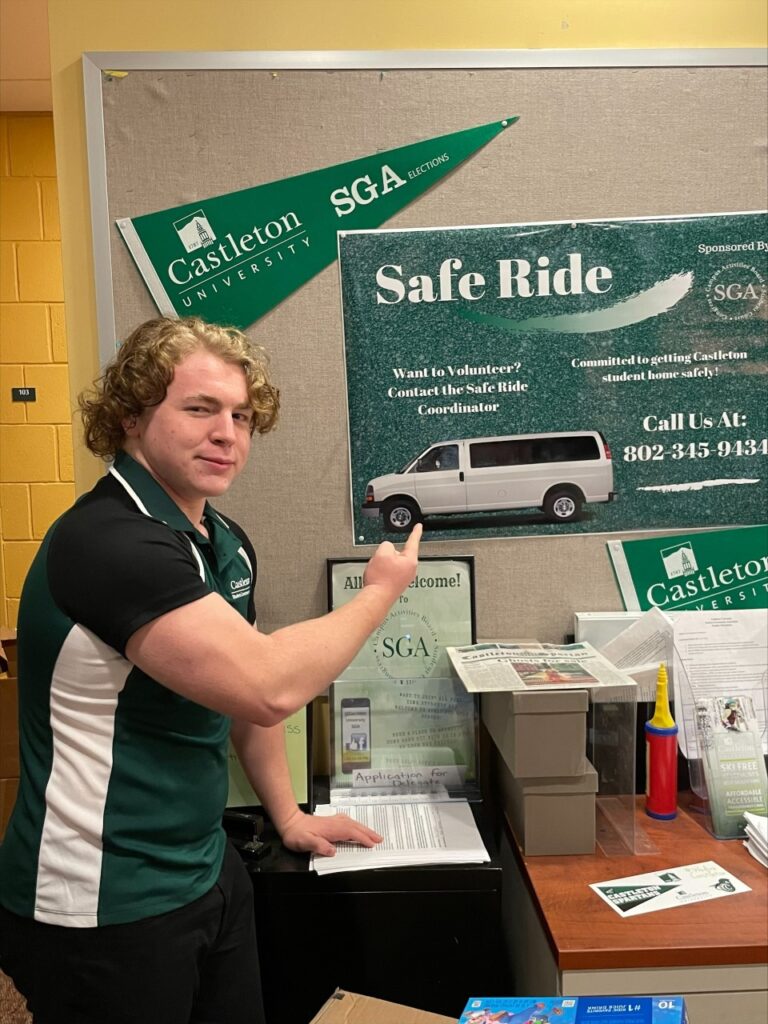Zdatny agrees to timeline extension

Vermont State Colleges Chancellor Sophie Zdatny has agreed to extend the May deadline for faculty working on certain parts of program consolidation for the upcoming tri-university merger in a meeting with Faculty Assembly leaders this past Friday.
The change, which follows Zdatny’s official response from Nov. 15 to Castleton faculty’s letter of concerns, plans to lengthen the program consolidation deadline into the first few days after spring courses end for programs that need additional work. Zdatny also acknowledged that a formal review of all the new programs will likely take place in early fall.
“[Consolidation] is for the faculty to figure out and obviously we wanted to support them in figuring it out—because it needs to happen—but this really needs to be a process that the faculty come up with,” Zdatny said. “So, this proposal came from them in terms of how they could see this working.”
But Faculty Assembly leader Preston Garcia said that though this extension solves the short-term issue of the “unnecessary speed and information” being asked of faculty in the merging of programs, it does not address the major financial and data-based concerns continually being raised by faculty.
“Our letter we sent was not focused on this optimization timeline. We wrote because we had major concerns about the entire process and the decisions being made. I feel as though the other campuses and the [Chancellor’s office] took our ‘pause’ request to specifically mean the program work above,” Garcia said in a follow-up email to Castleton faculty. “Is that a part of it? Yes, but is that the majority of the concerns we have? No. Just a statement of fact as I see it.”
Professor and Vice President of the Faculty Assembly, Lisa Pleban, also conveyed her opinion on how the chancellor’s office has addressed little else brought up by Castleton faculty in their letter of grievance.
“There has been no discussion about the other ‘asks’ in our faculty letter to the chancellor, specifically, a financial analysis that demonstrates the feasibility of this new VSU structure. Will this new VSU structure save the state money? Is it sustainable? Is it a structure that will attract students? Will the inequitable monetary support across campuses be addressed and corrected?” she said.
Before hearing of the change to the consolidation timeline, Castleton faculty had mixed responses on the chancellor’s official letter of response, saying that though they were beginning to see a shift in the level of administrative coordination, there were still concerns being ignored.
“We are actually really interested in obtaining the data that we have asked for. So that is still to be presented to us,” professor Helen Mango said. “How do we know that what is driving this conversation, driving the transformation, is actually true for Vermont and for the current Vermont State College institutions?”
Castleton faculty also said the letter sent by Zdatny felt almost like “a canned response” and that the information relayed sounded as though it simply came from previous transformation updates.
“One thing I found is that you have to sort of repeat a lot for communication purposes,” Zdatny said. “People are at different stages. So, sometimes in the transformation updates people will give me feedback about ‘Why are you having to say this again?’ And then sometimes people are like, ‘Wow, we didn’t know about this.’”
Since the chancellor’s letter of response, which included additional solutions for struggling faculty such as financial support for those completing program optimization work, administrative support for the successful transfer of green programs, and ensuring common times to meet for Faculty Assembly leaders, other concerns have been raised by Castleton faculty.
There are currently eight full-time, tenure track positions open at Northern Vermont University and an additional 14 nursing positions open at Vermont Technical College. Castleton faculty have questioned why these positions are posted as available when attrition has been a major focus of the transformation process.
“If we’re being told on the one hand that we’re going to save all this money with attrition, and then on the other hand, institutions are allowed to fill positions that are empty out because of retirements and because of people leaving, that simply doesn’t make sense,” Mango said. “We can’t be replacing individuals in individual programs at individual campuses if we’re going to be thinking as a system.”
Zdatny acknowledged these openings and said that the presidents of both universities are being thoughtful of what positions to post.
“We do know that we need investments in some areas and we do know that we need to fill some gaps. So, [the presidents] are trying to be strategic about what positions are being filled. If a position becomes vacant, there isn’t an automatic post it and hire someone,” Zdatny said.
When asked what the next move is for the Castleton Faculty Assembly in terms of having their other concerns addressed, Garcia seemed unsure.
“The honest truth is, I don’t know. I feel like every week I’m asked, ‘what is next?’ as the faculty assembly leader,” he said. “I have to be very judicious about making sure that I get everyone’s opinions and everyone’s ideas to formulate a potential next step, and then run it by everyone again. We need to be, at least if not in all unison, we have to have majority support.”








